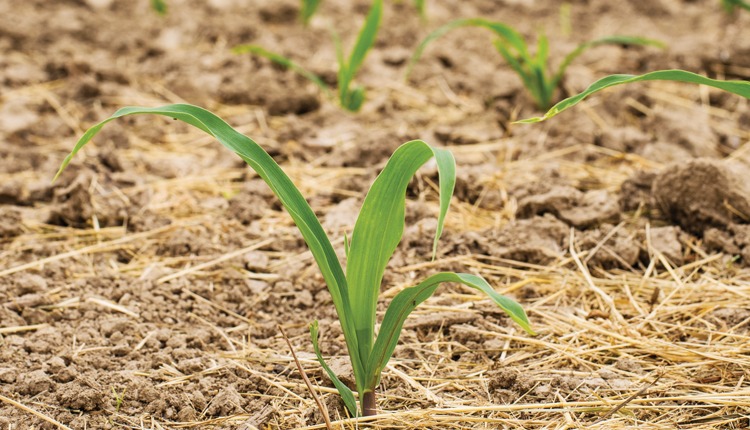
This silage was used to build on-farm forage inventory or sold to a nearby dairy farm. The harvested corn silage helped compensate for forage shortfalls on dairy farms, but the result is that these dairies have an unusually large supply of corn silage (often with lower starch content) relative to their total forage inventory.
More silage, less haylage
While corn silage inventories are higher than normal this fall and winter, many dairy farmers in northern areas are also contending with the impacts of alfalfa winterkill and reduced hay or haylage yields. A cold, wet spring delayed or prevented farmers from making normal spring seedings and planting corn, plus they were dealing with winter-damaged alfalfa fields. Winter-damaged alfalfa stands were spotty, and those who kept stands often had lower than expected yields of low-quality forage.
Looking ahead, many alfalfa stands need to be plowed down this fall and rotated to corn next year. In addition, higher than normal new alfalfa seedings are needed next spring to replace winterkilled stands. The result is that by this time next year, the total forage inventory will continue to have a high proportion of corn silage to feed, and therefore there will be the need to include more corn silage in rations.
Higher than normal inventory of corn silage will require additional silage storage space. This can be silage bags supplied and filled by a custom operator (especially if the extra inventory is likely to be for only one year), or additional permanent silage storage such as a silage bunker or a drive-over pile. More than a few dairies have built a bunker silo only to discover a few years down the road that it’s right in the way of a barn expansion nobody was even considering when the silo was built!
Piles provide flexibility
Drive-over piles have become quite popular, in part because of lower capital cost per ton stored (no walls as with bunker silos). The size of the pile can also expand or contract each year depending on the size of the crop.
Avoid the temptation to put a drive-over pile on bare ground since this will result in high spoilage losses, soil contamination, and compromised forage quality. Some farmers may find that what they thought would be a one-year move to more corn silage works out so well that the change becomes permanent.
Room in the ration
Given the scenario of high corn silage inventory and lower than normal hay or haylage inventory, it raises the questions: Can you feed too much corn silage in the dairy cow diet? How much corn silage is too much?
The answer, not surprisingly, is that dairy cows are quite flexible in how much corn silage they can consume in their rations. Many dairy farms are feeding 70 pounds or more of corn silage (about 25 pounds of dry matter) to high-producing cows with excellent results, including high milk production and good milk components. Feeding higher levels of corn silage in a dairy diet can help reduce purchased corn grain costs and can result in a more stable ration cost.
On the other hand, high inclusion rates of corn silage means more of your forage is coming from a single source. If neutral detergent fiber (NDF) digestibility is low, you will have a more difficult time balancing the ration for high milk production. As a result, this single forage source may have a big impact on your farm profitability.
Corn silage can be fed to heifers beginning at about 6 months of age, but the rate should be limited to prevent heifers from getting too fat. Some dairy farmers feed their heifers a ration of modest-quality forages — hay crops harvested later than normal or slightly weather damaged — plus corn silage with good results. The 2019 growing season will leave many dairy farmers with no shortage of these “modest quality” forages!











